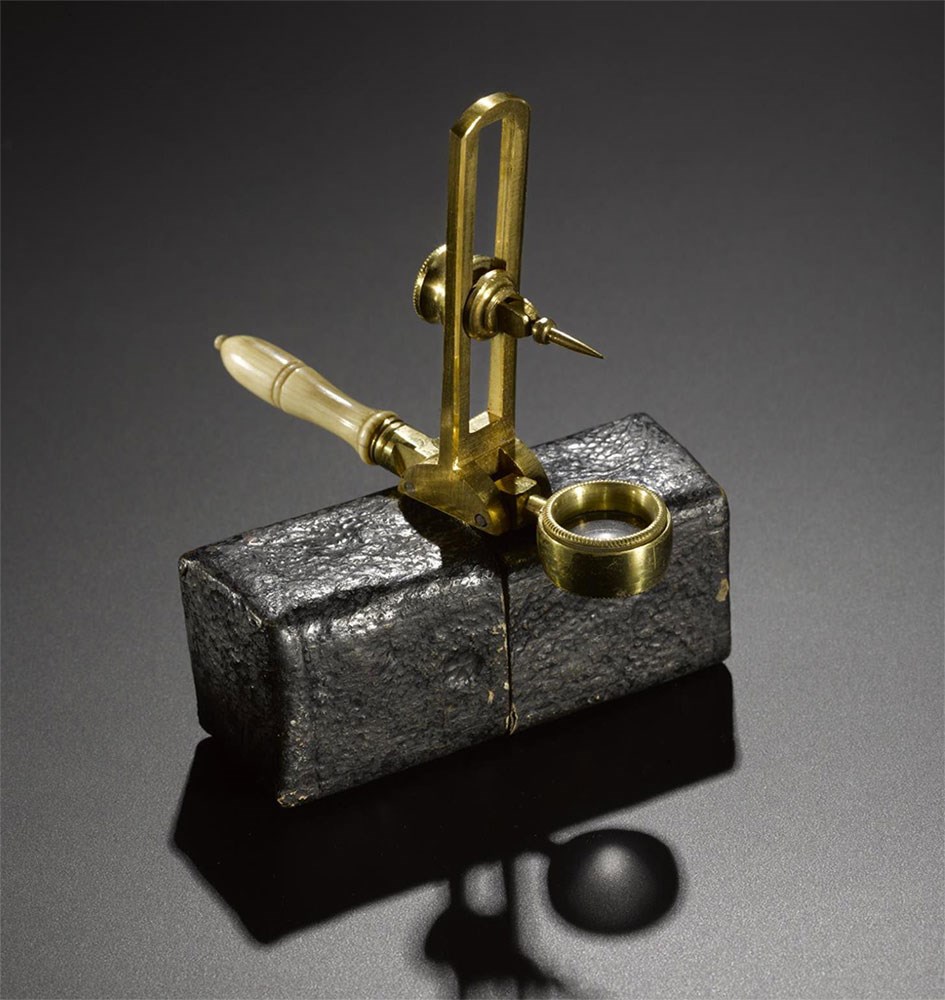Key in a search term below to search our website.
Key in a search term below to search our website.

In the early 18th century, natural history was an increasingly popular pastime and many people visited fields and ponds, often bringing a microscope, to investigate the flora and fauna.
The burst of activity in the field of microscopy for professional scientific research after following Robert Hooke’s book Micrographia was short-lived. However, this does not mean that microscopes were not used.
Microscope organisations established in the 19th Century, like the Royal Microscopical Society and the Quekett Microscopical Club, aimed to bring likeminded people together to share knowledge and promote the microscope.
One of these amateur microscopists was William Withering (1741-1799), a physician who studied in Edinburgh and later had a successful medical practice in Birmingham.
In 1772, Withering married Helena Cooke, an avid botanical illustrator who shared his passion for botanical enquiry. It is reasonable to assume that Cooke made the drawings for the publication of Withering's botanical research in 1776.
William Withering's book The botanical arrangement of all the vegetables naturally growing in Great Britain was the first English book based on the Linnaean taxonomy. However, Withering is best known for his research on the medical uses of purple foxglove, which he published about ten years later in 1785.

William Withering, head and shoulders. Woodcut, ca. 1780. Credit: Wellcome Collection. CC BY
Microscopes for field use had to be small and portable. Often, they came with a handy box, small enough to carry on the expedition.

Withering's simple and compound botanical microscope, unsigned but probably made in England, 1800 – 1850. Museum reference: T.1979.36
This microscope is the same kind of instrument William Withering used and recommended. It comes with a leather case and was easy to carry with on excursions. The optical unit of a variable microscope could be exchanged, so it could be used as a simple (one lens) and a compound microscope (at least two lenses).

Folding pocket microscope in a case, c. 1800. Museum reference: T.1938.103
This compass type microscope with a single lens is made of brass. The specimens, mostly insects, would be mounted on the spike. The handle, magnifying glass and spike fold inwards to fit into a small leather box. This type of microscope was mainly used by wealthy amateurs for leisure.

Cary-Gould pocket microscope in brass, unsigned but thought to have been made in England, 1825 – 1860. Museum reference: T.1979.37
This 19th-century microscope is one of the most popular designs. It was first made by William Cary and after 1850 produced by his former apprentice Charles Gould. The only change during this time seems to be the increased size and the mounting to the side of the box. That way it was still possible to access the box contents while using the microscope.
Header image: A scientific conversazione on microscopy held at Apothecaries' Hall on April 11th, 1855, Engraving from The Illustrated London News, April 28th, 1855.